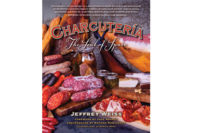For centuries, the butcher shop was a critical part of any town or village. The skills of the butcher were highly valued, and an apprenticeship program helped pass along the skills to the succeeding generations. With the introduction of boxed beef in 1967, grocery stores became less reliant on manual labor, and the role of the butcher diminished, at least in the mainstream meat industry. The skills were still valued among the country’s meat markets and small processors.
Changes in customer trends have turned the tide the other way. The butcher is a valued profession once more, and there is an opportunity for the trade to grow once more.
Kari Underly learned her butchery skills in the time-honored tradition of apprenticeship. The third-generation butcher apprenticed for three years before becoming a journeyman meat cutter. After 20 years in the industry as an entrepreneur, educator, author and business owner, she started Range Meat Academy to help pass along her expertise to others who are interested in learning the trade.
“There is definitely a shortage of skilled and knowledgeable craftsmen and women who can take a hanging carcass from the plant to portions for the plate,” she says. However, she sees an opportunity where modern consumer trends can help create a butchery renaissance.
“There is a renewed interest in the art of butchery and the value of the trade,” Underly says. “The mainstream food system has seen significant growth and interest in sustainability and the re-localization of the food system.
“For the meat industry, this has spawned increased attention to sustainable practices from the farm to the butcher to the table, and an increased desire for greater transparency along the way. As these demands and expectations continue to take root in the marketplace, so does the need for knowledgeable, customer-oriented and skilled butchers, meat cutters and clerks who are trained to high standards,” she adds.
Underly has held numerous classes and cutting demonstrations to give interested butchers the opportunity to learn the basics of the trade. She also wrote The Art of Beef Cutting to further explain how to break down a beef carcass. It became her mission to develop a school that is designed to create and promote high standards for excellence and integrity within the butchery trade by providing the most comprehensive, respected certificate program in the food industry.
“Range Meat Academy is an accumulation of my life’s work,” she adds.
An online component gives students a change to increase their knowledge base with their computer, phone or tablet.
“As mobile learning continues to expand, we must evaluate the way we teach and train today’s meat professionals,” she explains. “With our Range Meat Academy Online Leaning Management System, we can reach limitless students with just a click! Range Meat Clerk, Range Meat Cutter Poultry, and Range Meat Cutter Beef are available now. I’m just about to release Lamb, and Pork should be completed this summer.
“You will still need to get the time on the block to develop the muscle memory required to become a skilled meat cutter. But you will have proven that you have the knowledge and commitment required by completing our comprehensive curriculum and passing the required testing,” Underly adds.
Regardless of whether it’s an experienced butcher working on a carcass or a novice learning the ropes, there are certain tools that are needed for the job. Underly recommends the following knives be in every butcher’s knife roll:
- 6” boning knife
- 8” breaking knife
- 10” cimeter
- 12” breaker/butcher’s knife
“Tools are serious business,” she adds. “The basic tools you will need to cut large sides into primals, subprimals and retail cuts are a handsaw, a sharp breaking or butcher knife, a boning knife, a coarse and fine steel to hold the edge, a meat hook, meat pans and lugs, clean aprons and hand towels. With these basic tools and training, you’ll be able to fly through that carcass with ease.”
Proper personal protective equipment is important as well, as breaking down sides is a dangerous task for even an experienced worker. Underly recommends wearing a chain mail apron, which is made of small loops of stainless steel.
“This is worn underneath your apron and can help protect your mid-section when using knives and hand tools. Everyone should be wearing a cut resistant glove. If you’re breaking beef on a rail, you should wear a puncture resistant protective arm sleeve and a chain mail glove and apron,” she adds.
Range Academy, which is located in Chicago, was recently approved by the Illinois Board of Higher Education to operate as a vocational trade school. The approval required a rigorous 10-month process and shows that Range’s curriculum and course catalog meets high standards. With the online program now available, Underly has multiple opportunities to spread the knowledge of butchery to new craftspeople. She has larger plans in the works as well.
“Our long term goal to open a brick and mortar butcher trade school with a working butcher shop and “meatery,” she says.





